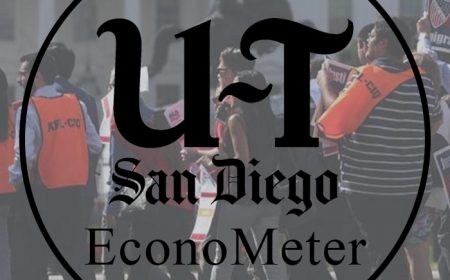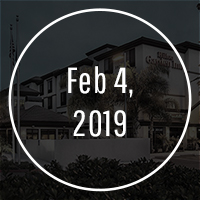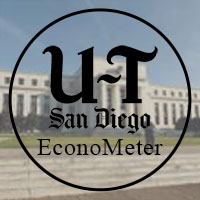Lodging Industry Forecast – 2015
How does one know what 2015 is really going to look like? What is critical is to examine all of the data and then hope that no event occurs to completely negate the keys to success in 2015. I like to start with macroeconomics. Bernard Baumohl of The Economic Outlook Group points to the expansion of the economy for six years and the fact that he feels this economy still has legs to continue the expansion through 2017. It makes sense that the expansion will continue for a while since we had such a slow start in 2009-2012,” he mentioned just a couple of months ago at The Lodging Conference in Phoenix.
During that period the economy was not on solid footing due to unknown quantities such as Obamacare, the government shutdown, energy prices and a very weak level of consumer confidence. “Currently, payrolls are up, gas prices have been declining, discretionary spending is up and consumer sentiment is the best in seven years,” Baumohl stated enthusiastically. Since his pronouncement in October, much like his previous macroeconomic forecasts, he is spot on. Oil prices continue to decline and the pace of job growth has accelerated to where we are achieving record employment numbers.
According to Patrick J. O’Keefe, Director of Economic Research at CohnReznick, the U.S. economy approaches the end of 2014 in its best shape in a decade and is expected to expand further, but at a gradually slower pace over the course of 2015.
Current Conditions
On the broadest measure of economic activity, real gross domestic product (GDP) – that is, total output of goods and services, adjusted for inflation – the U.S. has recently concluded its best performance since 2003. Growth since March has been broadly distributed with exceptionally strong (and accelerating) contributions from the business sector and somewhat slower, but still significant, increases in household spending.
Year-to-date through November, job growth has exceeded 2013’s comparable period by almost one-fifth. These jobs are going to many people who do not have college degrees and hence it benefits a broader base economy.
The consensus forecast is for real GDP to expand by 3 percent in 2015. Employment is expected to continue to grow at about the same pace as in 2014 (approximately 240,000 net new jobs per month) and if so, the unemployment rate would be reduced to 5.5 percent.
Tourism Industry – U.S.
The U.S. is the largest global market in terms of inbound tourist expenditures. Growth has been the result of various international campaigns such as the Brand USA campaign and the promotional initiatives undertaken by the U.S. in other countries such as Germany and Canada, according to Tourism Economics.
BRIC countries (Brazil, Russia, India, and China) were responsible for major growth in international visitor arrivals to the U.S. during the past five years. Visitor increases by each of the BRIC countries is as follows:
- China: 880,400 in 2009 vs. 2.2 million in 2013
- Brazil: 892,600 in 2009 vs. 2.1 million in 2013
- India: 550,000 in 2009 vs. 860,000 in 2013
- Russia: 143,000 in 2009 vs. 322,000 in 2013
These increases were due in large part to more flexible visa procedures by the U.S. and increased disposable income in these countries. Even with the economic slowdown in all of the BRIC countries, visitors are still expected to increase in the coming years.
Lodging Industry – U.S.: Where We Are in the Cycle
According to Patrick Ford of Lodging Econometrics, “favorable economic conditions, record-setting operating metrics, and a positive outlook for the next few years have combined to make this an opportune time for hotel developers.” As of the end of Q3 2014, there were 3,516 projects and 443,936 rooms in the development pipeline. By our estimate, that would represent an increase in room supply of about 8 percent, all of which can be absorbed by our current demand growth.
Ford states that, “developers are extremely positive, with conditions being near perfect. At year-end 2014, occupancy will have reached a 17-year high. Both average daily rate and revenue per available room will finish at record highs.”
PKF Consulting is forecasting that increasing average daily rates (ADR), record occupancy levels, low inflation, and the continued presence of effective cost-control practices will contribute to double-digit growth in net operating income (NOI) through 2016. They cite strong lodging industry fundamentals with balanced growth in supply and demand, favorable pricing power, and only modest upward pressure on labor costs. These positive factors may be enough to overcome an expected increase in interest rates in the coming years. Therefore, they expect capitalization rates to remain stable through 2018. While we are bullish, I am uncomfortable forecasting past 2016.
The estimated 2014 nominal asset value of $202,789/key is forecast to increase at a 7.7 percent annual rate through 2018. This increase in asset valuation will be almost entirely the result of increases in NOI. With increasing NOI and a stable cost of capital, PKF believes that hotel dividends should be quite attractive relative to other investment opportunities.
Concerns and Thoughts from the Water Cooler
Host Hotels and Resorts noted last month that this late in the cycle, capital is coming in and bidding up asset values. Their concern is that the cycle is in the later stages. We certainly agree that we are past the sixth inning (in baseball terminology) but we believe that we have at least two years of powerful growth ahead.
With crude oil prices falling more than 35 percent since this summer, Tourism Economics (TE) is forecasting what the effects will be on the U.S. economy. Using their Global Economic Model they estimate that a $30 per barrel drop in crude oil prices boosts real GDP growth by around 0.6 percentage points.
The savings to consumers represents the equivalent of a stimulus of $62 billion annually or a 0.5 percent boost to disposable income which should translate into increased consumer spending. The negative here is the impact on communities that have exploded with the growth from fracking and other domestic sources of oil.
Supply growth has been 2 percent on average for the last 20 years. Typically, revenue per available room (RevPAR) growth spurs additional supply to the point that RevPAR is pressured. Supply growth is up to 1.6 percent next year, still below the 2 percent average but “RevPAR growth peaked in Q3, so we see a slower rate of RevPAR growth in 2015,” according to UBS.
Valuations are the biggest concern that investors have at this point in the lodging cycle. Do we hold the hotel asset until clear signs of a cycle ends? If so, we maximize cash returns but sacrifice asset pricing. The market rewards those who can time it so that it appears that you are leaving meat on the bone for the buyer but in actuality you have optimized the disposition by pulling out great cash returns and hitting the peak of the asset pricing market. Capitalization rates are forecast to be stable but if you want to be safe, do not assume this. They may creep up just as interest rates do in the second half of 2015.
Selected Markets
California enjoyed strong growth in both occupancy and rate performance. San Diego will finish 2014 at just under 75 percent occupancy and ADR of $142 with nearly 9 percent RevPAR growth. We forecast that this market will surpass 75 percent next year at ADR of $150 showing ADR growth of 5.5 percent, occupancy growth of one percent and RevPar growth of 6.5 percent.
Los Angeles should finish 2014 at 79 percent occupancy and ADR of $146 and grow to 80 percent at close to $155 ADR. This market saw RevPAR growth of 10 percent in 2014 and should slow to 7 percent in 2015. Anaheim should finish 2014 at 76 percent occupancy and $133 ADR and should see growth to 77 percent occupancy and ADR of $140 with RevPAR growth of 9 percent in 2014 dropping to 6.5 percent in 2015. The San Francisco Bay Area should finish 2014 at 84 percent occupancy and $205 ADR, up 11 percent in RevPAR. This growth should slow to 7.5 percent in 2015, all on the ADR side with a $14 increase to $219.
Phoenix is one of the hottest recovery markets in the U.S. along with Denver. There are sub-markets that are stronger than others but all are seeing “lift” from the strength in both room demand and rate growth. Further, the Super Bowl will see phenomenal results as it hits right at the start of the season. This is counter to what occurred last year when New Jersey hosted this event…not quite in the peak of the market. Perhaps that is an understatement. Phoenix will finish 2014 at 62 percent occupancy and $112 ADR, up 10 percent in RevPAR. In 2015, we expect the market to continue to rebound at that pace with occupancy up to 65 percent and average rates approaching $120.
Colorado Springs is one of those markets that saw virtually no recovery until 2014, in some cases due to wildfires. While double-digit RevPAR growth is not there yet, we saw solid growth of over 5 percent this past year. This seems to be the pattern for many secondary markets in the U.S. They do not have the strength of the primary markets yet but they are also improving. 2015 will be a good year for Colorado Springs as its big brother up the road, Denver, saw a fantastic 16 percent RevPAR growth in 2014.
The bottom line? Know when to buy and sell in various markets. Perhaps that is easier said than done. Let us know if we can be of help and most importantly, have a happy and healthy 2015!







